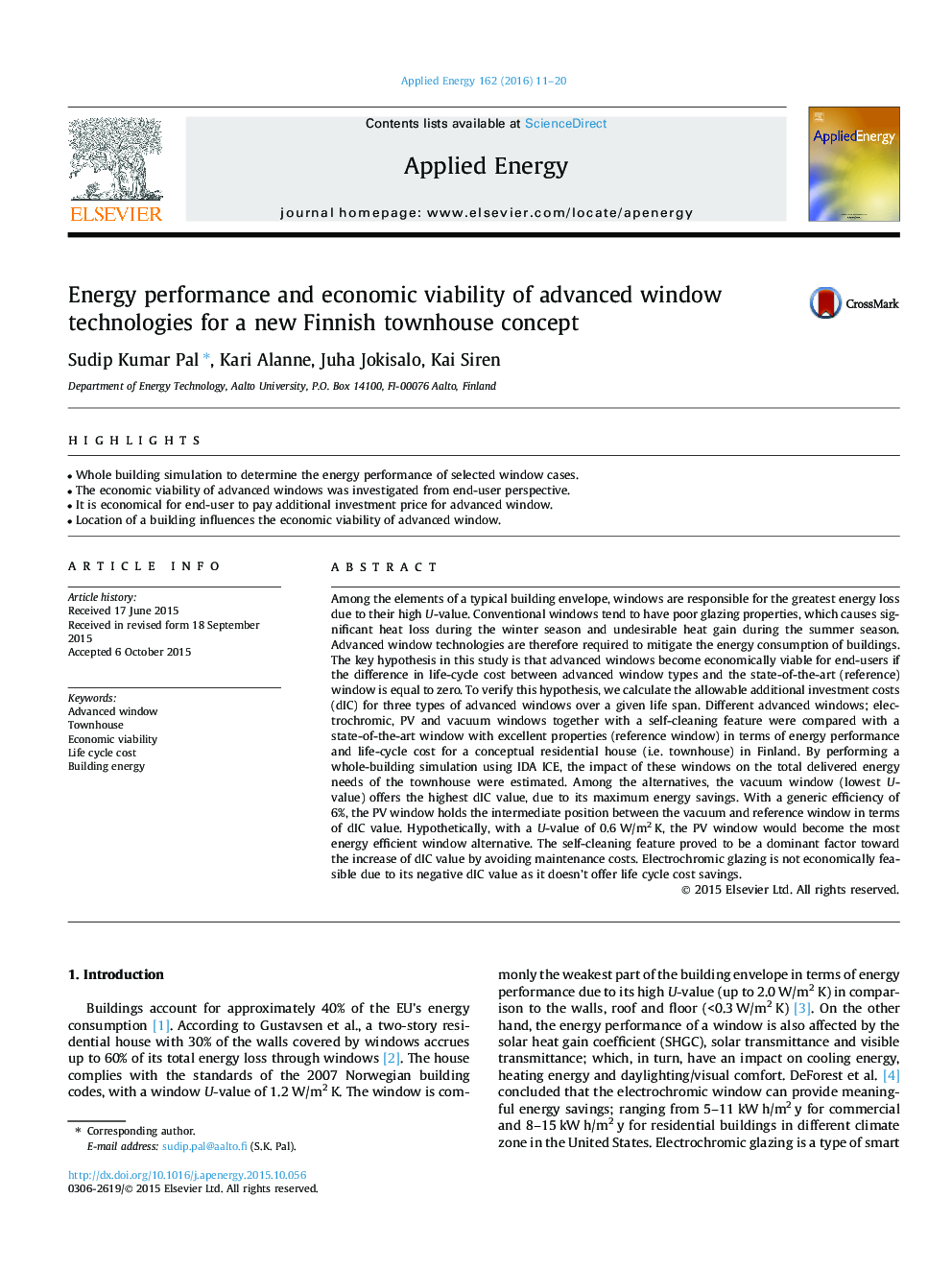| کد مقاله | کد نشریه | سال انتشار | مقاله انگلیسی | نسخه تمام متن |
|---|---|---|---|---|
| 6684593 | 501865 | 2016 | 10 صفحه PDF | دانلود رایگان |
عنوان انگلیسی مقاله ISI
Energy performance and economic viability of advanced window technologies for a new Finnish townhouse concept
ترجمه فارسی عنوان
عملکرد انرژی و پایداری اقتصادی فن آوری های پیشرفته پنجره برای مفهوم شهرک جدید فنلاند
دانلود مقاله + سفارش ترجمه
دانلود مقاله ISI انگلیسی
رایگان برای ایرانیان
کلمات کلیدی
پنجره پیشرفته خانه شهری، پایداری اقتصادی، هزینه چرخه زندگی ساختمان انرژی،
موضوعات مرتبط
مهندسی و علوم پایه
مهندسی انرژی
مهندسی انرژی و فناوری های برق
چکیده انگلیسی
Among the elements of a typical building envelope, windows are responsible for the greatest energy loss due to their high U-value. Conventional windows tend to have poor glazing properties, which causes significant heat loss during the winter season and undesirable heat gain during the summer season. Advanced window technologies are therefore required to mitigate the energy consumption of buildings. The key hypothesis in this study is that advanced windows become economically viable for end-users if the difference in life-cycle cost between advanced window types and the state-of-the-art (reference) window is equal to zero. To verify this hypothesis, we calculate the allowable additional investment costs (dIC) for three types of advanced windows over a given life span. Different advanced windows; electrochromic, PV and vacuum windows together with a self-cleaning feature were compared with a state-of-the-art window with excellent properties (reference window) in terms of energy performance and life-cycle cost for a conceptual residential house (i.e. townhouse) in Finland. By performing a whole-building simulation using IDA ICE, the impact of these windows on the total delivered energy needs of the townhouse were estimated. Among the alternatives, the vacuum window (lowest U-value) offers the highest dIC value, due to its maximum energy savings. With a generic efficiency of 6%, the PV window holds the intermediate position between the vacuum and reference window in terms of dIC value. Hypothetically, with a U-value of 0.6Â W/m2Â K, the PV window would become the most energy efficient window alternative. The self-cleaning feature proved to be a dominant factor toward the increase of dIC value by avoiding maintenance costs. Electrochromic glazing is not economically feasible due to its negative dIC value as it doesn't offer life cycle cost savings.
ناشر
Database: Elsevier - ScienceDirect (ساینس دایرکت)
Journal: Applied Energy - Volume 162, 15 January 2016, Pages 11-20
Journal: Applied Energy - Volume 162, 15 January 2016, Pages 11-20
نویسندگان
Sudip Kumar Pal, Kari Alanne, Juha Jokisalo, Kai Siren,
